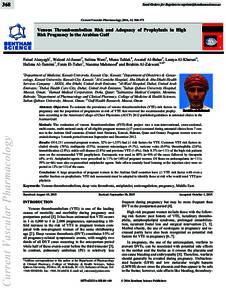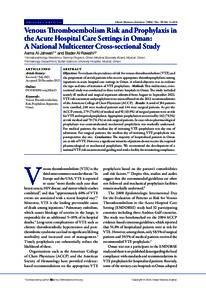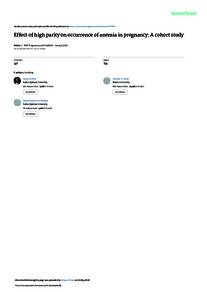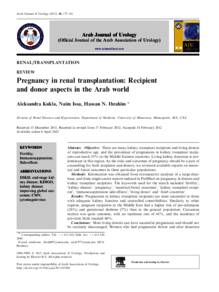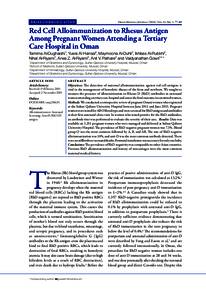Document
Venous thromboembolism risk and adequacy of prophylaxis in high risk pregnancy in the Arabian Gulf.
Identifier
DOI: 10.2174/1570161113666151030105431
Contributors
Al-Jassar, Waleed., Author
Wani, Salima., Author
Tahlak, Muna., Author
Al-Bahar, Awatef., Author
Al-Kharusiyah, Lamya., Author
Al-Tamimiyah, Halima., Author
El-Taher, Faten., Author
Mahmood, Naeema., Author
Al-Zakwani, Ibrahim., Author
Publisher
Bentham Science Publishers.
Gregorian
2016-07
Language
English
Subject
English abstract
Objectives: To estimate the prevalence of venous thromboembolism (VTE) risk factors in pregnancy and the proportion of pregnancies at risk of VTE that received the recommended prophylaxis according to the American College of Chest Physicians (ACCP) 2012 published guidelines in antenatal clinics in the Arabian Gulf. Methods: The evaluation of venous thromboembolism (EVE)-Risk project was a non-interventional, cross-sectional, multi-centre, multi-national study of all eligible pregnant women (≥17 years) screened during antenatal clinics from 7 centres in the Arabian Gulf countries (United Arab Emirates, Kuwait, Bahrain, Qatar and Oman). Pregnant women were recruited during a 3-month period between September and December 2012. Results: Of 4,131 screened pregnant women, 32% (n=1,337) had ≥1 risk factors for VTE. Common VTE risk factors included obesity (76%), multiparity (33%), recurrent miscarriages (9.1%), varicose veins (6.9%), thrombophilia (2.6%), immobilization (2.0%), sickle cell disease (2.8%) and previous VTE (1.6%). Only 8.3% (n=111) of the high risk patients were on the recommended VTE prophylaxis. Enoxaparin was used in 80% (n=89) of the cases followed by tinzaparin (4%; n=4). Antiplatelet agents were prescribed in 11% (n=149) of pregnant women. Of those on anticoagulants (n=111), 59% (n=66) were also co-prescribed antiplatelet agents. Side effects (mainly local bruising at the injection site) were reported in 12% (n=13) of the cases. Conclusion: A large proportion of pregnant women in the Arabian Gulf countries have ≥1 VTE risk factor with even a smaller fraction on prophylaxis. VTE risk assessment must be adopted to identify those at risk who would need VTE prophylaxis.
Member of
ISSN
1570-1611
Resource URL
Category
Journal articles

